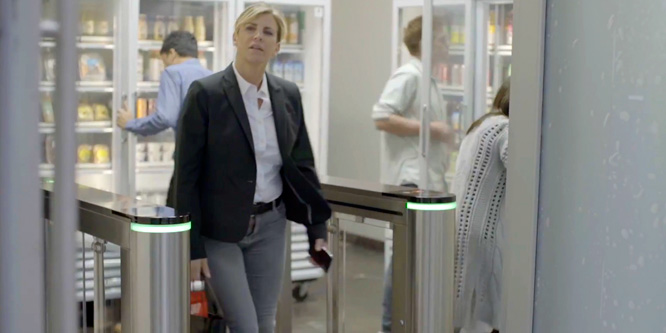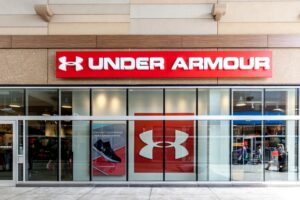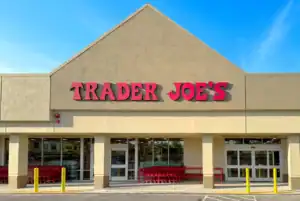
Source: Zippin
August 27, 2018
Can Zippin zip past where Amazon Go is going?
With only two Amazon Go stores live (the second having just opened this morning, according to KIRO news), there’s still plenty of room for the great disruptor to be disrupted. San Francisco-based Zippin hopes to be the checkout-free grocer that just walks in and wins at “just walk out.”
Zippin, founded by industry veterans from Amazon and SRI, opened a “just walk out”-enabled concept store in San Francisco’s SOMA neighborhood. In a statement, Zippin notes that while early approaches to autonomous shopping have relied solely on cameras to track purchases, its technology uses a combination of overhead cameras and smart shelf sensors for a higher level of accuracy.
Zippin said in a statement, “Cameras and smart shelf sensors track when and which products are picked up or put back. Combining these two inputs allows Zippin to place the right items in the right shoppers’ virtual carts.”
The start-up said its approach stands out for its ability to work accurately even in a crowded store.
Zippin is marketing its solution, which integrates its own software with readily available hardware, for other grocers to deploy.
“Consumer frustration with checkout lines is driving a tidal wave of demand among retailers and real estate owners keen to provide a frictionless retail experience,” said Zippin CEO, Krishna Motukuri. “With annual sales of grocery stores, convenience stores and quick-serve restaurants totaling nearly $1.6 trillion in the U.S. alone, we believe there is a sizeable market opportunity for us to pursue.”
Other hotly-anticipated combatants may enter the competition for “just walk out” dominance in the U.S. In June, Reuters revealed that Microsoft had been not only working on checkout-free technology, but discussing a potential partnership with Walmart.
In Japan, San Francisco-based vendor Standard Cognition plans to pilot a “just walk out”-enabled store in 2019 in conjunction with Japanese drugstore supplier Paltac, according to Fast Company. The two partners intend to have 3,000 stores set up with the technology by the 2020 Tokyo Olympics.
Elsewhere in Asia, Xiaomai, BingoBox and Alibaba are among the many players chasing the cashier-free retail opportunity, with some players utilizing facial-recognition technologies.
-
Zippin Launches Next Generation Checkout-Free Technology Enabling Retailers to Quickly Deploy Frictionless Shopping – PR Newswire
-
Second ‘Amazon Go’ store opening in downtown Seattle – KIRO 7
-
Amazon Go – Amazon
-
BingoBox RFID self-checkout shopping – PYMNTS
-
Will Amazon Go face rivalry from Zippin? – NASDAQ
-
Exclusive: Microsoft takes aim at Amazon with push for checkout-free retail – Reuters
-
Will other grocers beat Amazon Go to the punch? – RetailWire
-
JD.com joins China automated shopping push – Financial Times
-
Standard Cognition is first Amazon Go rival to unveil deal with stores – Fast Company
Discussion Questions
DISCUSSION QUESTIONS: Given Zippin’s arrival on the scene and the possibility of a Microsoft/Walmart partnership, what path do you now see “just walk out”/cashier-less grocery technology taking in the U.S.? Do you see a sizeable opportunity for start-ups such as Zippin at this point?
Poll
BrainTrust
John Karolefski
Editor-in-Chief, CPGmatters
Recent Discussions







The fact that Amazon Go has not gone past one store is telling. While I have no doubt that “just walk out” cashier-less solutions and platforms will continue to evolve, I’m skeptical that this will be widely adopted for many years to come. Part of the reason is the technology investment. The amount of current technology required to successfully do cashier-less checkout is still highly prohibitive for most retailers to deploy at scale. Cashier-less checkout is certainly part of retail’s future, but the operative word is “future.”
I can’t add much more to this. I too am wary of the cost and the maintenance of the technology. The day will come but I don’t think we are quite there yet. For my 2 cents.
At this time, it is too capital-intensive to be attractive. If the cost of implementation comes down over time, it will still take a few years for this technology to be sufficiently accepted and a few more years to be widely implemented. I agree with Mark Ryski.
Technology is moving forward with stuff so fast, it makes my head spin. “Just walk out” kinda sounds like an offer to shoplifters, who would be glad to oblige and walk out with the goods, except, the stores actually want to be paid for the stuff. So the slogan sounds innocent, but it can be misconstrued for certain folks.
I couldn’t help myself there, but yes, this is going to be the new thing in the future, as human-less, wireless and digital everything will make the need for engaging the consumer useless. But I still see the need for consumers who prefer the real folks taking their money. Both transactions will still be needed, and finding the right mix will take some thought. A friendly, engaging cashier will always remain an asset and technology will fill in the rest.
Change is inevitable. Change in retail is moving at light speed. It’s great to see that Amazon will have some competition moving forward. However, before the industry gets carried away, there are some real business model cost issues to solve. The technology to-date is not cheap. If the technology is used to eliminate staff, that could work to degrade customer experience in high-touch stores. Zippin would appear to work well in high-volume carry out environments like convenience stores. There are hundreds of thousands of c-stores world wide that would provide Zippin, Microsoft/Walmart and Alibaba with ample opportunity. The customer will ultimately vote with their feet as to whether and where “just walk out” works best for them.
I suppose I am the only person who says to themselves: “Well, if I want a cashier-less experience, why don’t I just order the stuff online and skip the drive, the cart, the bagging, etc.”
I truly do not understand why this technology matters in ANY of its forms. The only place it makes sense is a c-store or a dollar store, where you need one or two items and would love to just get in and out. But those places can’t afford the technology particularly. In truth, I don’t think anyone can afford the technology, but that’s the least of it.
I simply don’t get it. When I want a cashier-less experience, I buy online.
I believe the no-cashier checkout technology is a long-term growth curve, not a fast-track solution for most standard retail operations. And since shopping has always had a very human social context, I don’t see the tech replacing helpful human interaction. That said, helpful humans performing checkout should be all over the store in aisles, not just in a static section at the front of stores.
Obviously more providers are developing technologies to eliminate the checkout line sensing there is a large market for this. Amazon Go’s camera solution has many bottlenecks — too many cameras needed, gets overwhelmed with many people in the store at the same time and high cost. The fact that Zippin is using shelf readers says that cameras by themselves cannot track the items leaving the store well. The market for cashier-less grocery stores will only grow in time due to the convenience and speed for the consumer they offer. May the best solutions giving the best service win.
Yes this is capital intensive and yes, some would prefer to just shop online if they want to avoid the cashier — but the application is real and closer than we think. If Zippin can license a solution that is “just walk out” ready at a price that is scalable — that is a huge opportunity. As I’ve said before, the need for some to see (and potentially feel) the produce, dairy and meat they buy will continue to be a driver for in-store shopping. No one likes the checkout experience so the innovators that can eliminate that friction will win.
This is just another example of technology for technology’s sake. If it can be done, it must be good and shoppers will rejoice. Not.
Are grocery shoppers really demanding “just walk out” stores? Not really. I can see this working in convenience stores for people who walk in and out with a soft drink and bag of chips. But I cannot see this working in a supermarket with a $200 order of groceries. Do these shoppers really want to bag their own groceries as they cruise the aisles as a reward for just walking out? I don’t think so.
Finally, there is the cost factor. Not many grocers will invest in this technology to reduce the frustration of long checkout lines. They would be better off hiring more cashiers and opening more lanes.
Just walk out shopping is probably a viable piece of the picture of the future of retailing, but I think it will remain a relatively small piece for the next few years at least. If it were wildly successful, one imagines Amazon would have extended the experiment and, as Paula notes, why wouldn’t I just skip the store altogether?
Decades ago Superquinn pioneered a fairly interesting compromise. Customers scanned their goods as they shopped and then paid for their purchase at a pay station when they hung up the scanners. Not quite “just walk out,” but close. So the question is, what exactly is it customers don’t like? Is it going to the store in the first place; physically shopping for goods; standing in line?
Before we can calculate how practical this (currently) capital-intensive technology is we need to work much harder to determine the size and character of the addressable market — and that begins by figuring out which problem we are actually trying to solve.
Technology only seems like a driver of change, but more often than not the acceptance of a technology is a reflection of a broad-based change in the culture or consumer market, so before we place our bets we best take a second look at those pesky shoppers and find out what they really want.
The companies experimenting with “just walk out” technology are technology innovators rather than retail competitors. Each of these companies is creating retail outlets to experiment with technology and to establish proof of concept. That does not make them retail competitors. It does, however, make them innovators ready to be acquired by existing retailers when proof of concept reaches an acceptable stage.
I hate checkout lines. I love the idea. The cost of finding and keeping trained staff is almost impossible not just in the U.S. but it’s becoming a problem all over the world. Japan’s c-store industry has a greater problem than the U.S. The technology is evolving faster than most of us realize.
When it comes to shoplifters the technology will most likely reduce theft than make it easier to steal. My projection you will begin to see a major roll out in five years.
Great comment regarding other geographies! Japanese C-stores in particular have a greater need, a more accepting clientele and a tendency to embrace new technology than the big US players.
I see a sizable opportunity for any size organization to make this successful via technology that works for shoppers and the retailer. RFID has had its fits and starts, however the biggest challenge is still to get all the suppliers on board, so I don’t see that happening anytime soon. There is still the question of the best process to make this viable for retailers to manage inventory movement effectively.
I am a bit skeptical about this now. First, it appears it is going to be too costly to maintain for most retailers. More than that, is the public ready for it? Time will prove this to be workable. But that time is not today.
While cashier-less technology is getting a lot of media hype, it will likely be a long time before it become a pervasive part of our shopping experience. It appears that many companies are fine-tuning the technology to dramatically increase the accuracy, however cost is a major, major obstacle.
The number of cameras and/or sensors that are required and the complexity of the technology will drive the total cost of implementation and maintenance out of reach for retailers. It would be interesting to see the cost model for the Amazon Go stores and the other prototype stores under development with the other technology companies chasing Amazon. This will probably eventually happen, but it won’t be very soon.
The retailer side has high costs, including tech improvement to existing stores. The consumer side has costs too — time in downloading, entering payment data, managing across stores and limited assortment. Examples abound in launches (around the world) but I predict it will start out as an option (just like express checkout or self-checkout) in stores before any full-scale adoption.
I believe someone on the thread mentioned segmentation, and there will be an early adopter group that jumps on board with this tech. In the meantime, it will take a long cycle before retailers adopt the tech in broader measure. Walmart canceled their Scan & Go — which provided most of the same benefits as just walk out — without the heavy tech requirements.
Zippin may have some great opportunities in licensing the tech (if they make it easy and low-cost to implement) and they would have an opportunity to penetrate the POS market far more than roll out complete new stores.
While I agree that creating AND maintaining the technology for an entire “just walk out” store is prohibitive in terms of dollars and accuracy, the concept can work (and has worked!) on brand/fixture-specific business models. Using “small data” and creating new disruptive workflows, brands can dramatically increase their marketing and merchandising efficiencies, supply chain visibility and hence margin dollars by combining technology and workflows.
The “just walk out” technology will surely have its day, even if not in the near-term. There is a place for this, but I think we are missing the boat if we expect this technology to quickly overtake large-scale, large-footprint stores like a full-service grocery supermarket or Walmart Supercenter. The more immediate use case is for smaller footprint locations like a c-store or smaller grocery outlet.
The question no one is asking is if this technology will cause a change in the types of stores we see opening in urban and later suburban locations. Large brands like a Walmart or Target, who are already experimenting with smaller stores, may consider something like this because of the perceived value they think it will create for shoppers and because they can afford the technology.
I expect we will see new store formats emerge that are designed form the ground up to work with cashier-less technology like this and it may just change how we shop for certain product categories. Yes, some things you will just order online and have it shipped to avoid the whole “express checkout” experience, but sometimes you need to see it and feel it before you buy. This technology has the ability to make that experience better and therefore more appealing to many shoppers.
I’m scratching my head over how this story has been covered since the first Amazon Go store opened. “Just walk out” has a narrow use case — for downtown or office park convenience stores with primarily foot traffic. Why does the business press keep insisting that this has application for full-line grocery stores when the demos clearly show shoppers buying just a couple of ready-to-consume items on a visit?
Zippin and MS/Walmart are adding fuel to the fire certainly. It is cool to see how smart shelves, video surveillance and NFC can combine to create a slightly faster checkout experience. I’m a major fan of in-store sensing for a variety of applications, so these technologies are promising. But spare me the ironic fantasy of the store where you don’t need to interact with another human yet you submit to intensive surveillance when you buy a sandwich and a Red Bull.
Zippin is not only building out their own retail stores. They are also selling the technology. The stores aren’t a simulation. They are the real-life example to showcase how the technology is working. Zippin won’t be the only one offering up its technology to other retailers. Competition will be good for everyone. Is Zippin early enough — and good enough — to stay in the game? Time will tell.
AmazonGo, Zippin and future “just walk out (JWO)” solutions will create exciting new opportunities for retailers, some obvious, some less so. JWO opens up more of the store layout for additional products, or allows for smaller footprint stores. It also allows retailers to assign staff to different, customer-oriented roles. On the less obvious side, JWO helps retailers understand how shoppers navigate the store without the deployment of expensive sensors. Retailers can see in what order shoppers have added items to their baskets and determine their shopper journey with that information. This enables them to leverage a whole new data set with which they can reorganize store layouts and planograms to improve sales and the shopper experience.